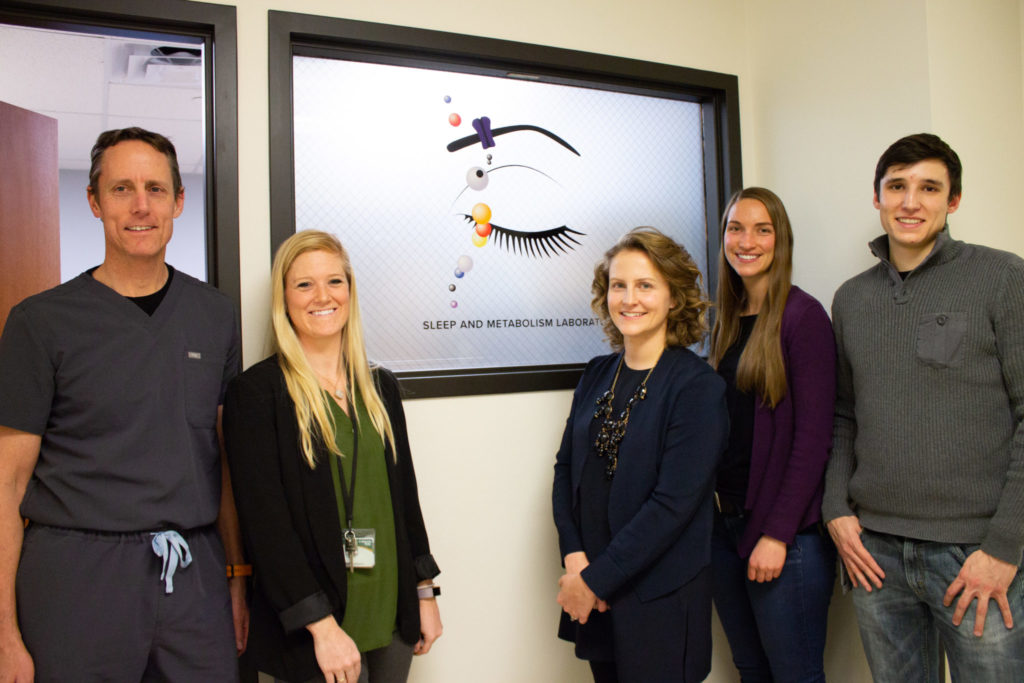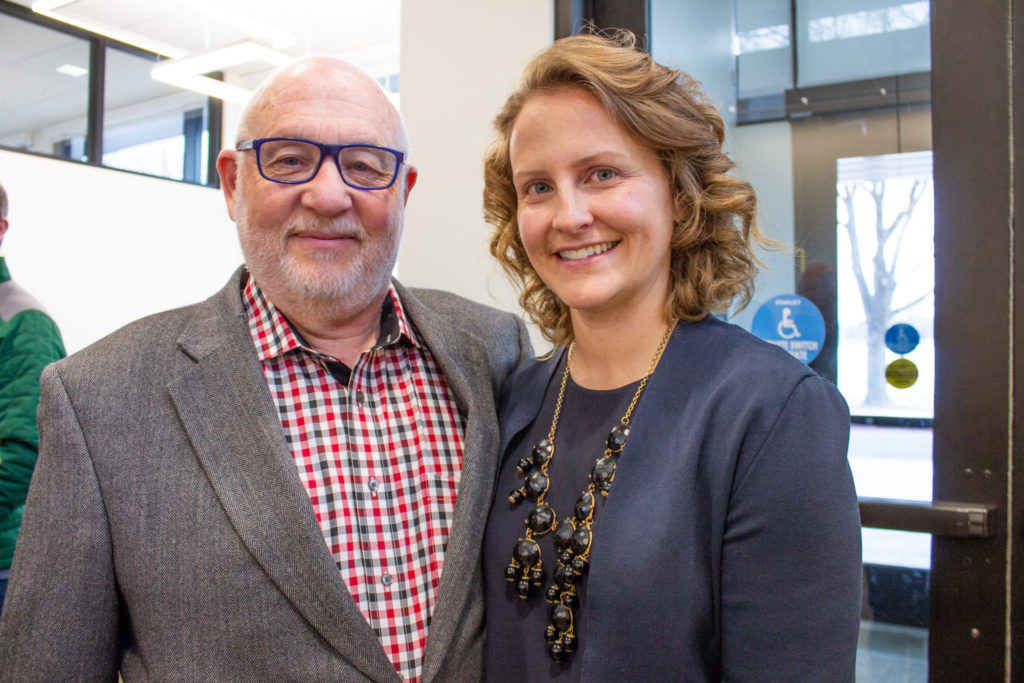
Josiane Broussard, assistant professor and the director of the Sleep and Metabolism Laboratory (SAM Lab) in the Department of Health and Exercise Science (HES), wants to know how sleep and circadian disruptions impair our health and what can be done to counteract these negative effects.
Now she has a new lab to conduct that research.
Construction of the new “SAM Lab,” as part of the Human Performance Clinical Research Laboratory, was funded by the department to integrate Broussard’s thriving research program in sleep and circadian biology, which is currently focused on the role of physical activity as a means to prevent age-related disease and disability. The SAM Lab celebrated its grand opening on Feb. 19.
Professor Barry Braun, HES department head, and Laurie Biela, HPCRL manager of research operations, worked with Broussard to repurpose existing space in the HPCRL to construct the state-of-the-art sleep lab. Brady Carlstrom, project manager at CSU Remodel Construction Services, was successfully able to take Broussard’s concept and construct a technically sophisticated and aesthetically pleasing sleep lab — the first ever at CSU. Sound and light attenuation are essential components of sleep and circadian research. Fortunately, Carlstrom and his team have extensive expertise in this area from previous CSU projects.
Metabolism and sleep loss
CSU’s SAM Lab is specifically interested in the metabolic effects of sleep and circadian disruption. Currently, Broussard and her team are examining how insufficient sleep and associated circadian misalignment affects the cells in our bodies. In one study, the lab is focusing on metabolic tissues such as muscle, liver and fat tissue. This study, nicknamed MITO, brings healthy volunteers into the lab for metabolic tests and performs muscle and fat biopsies before and after a period of insufficient sleep.

Most of the research conducted in CSU’s SAM Lab focuses on three- to seven-day studies in which volunteers live in the lab full-time and experience sleep and/or circadian disruption. Broussard and her team are also investigating countermeasures to sleep and circadian disruption by manipulating the timing of behaviors such as food intake and exercise.
“Shift workers are at a much higher risk for developing diabetes and obesity than non-shift workers. Moving forward we’d like to investigate ways to mitigate impairments associated with shift work and hopefully reduce the risk for metabolic diseases in this population,” explained Broussard.
In a recently completed study, Broussard’s team tested afternoon exercise as a potential countermeasure to the metabolic impairments associated with insufficient sleep. Even though exercise is considered one of the most insulin-sensitizing behaviors available to us, metabolism was still impaired by insufficient sleep, and exercise was not able to compensate.
“It’s still somewhat of a mystery why we need sleep and in what ways sufficient sleep is necessary for health,” explained Broussard. Researchers such as Broussard hope to develop a better understanding of this vital function through further studies.
Metabolomics grant funds further testing
Broussard has received multiple grants to fund her studies on the impact of sleep and circadian disruption on human health. “We’ve been very fortunate with funding to conduct our research,” she said.

Currently, Broussard and the SAM Lab are funded by K01 and R03 grants from the National Institutes of Health entitled “Impact of insufficient sleep on peripheral metabolic tissues.” The lab is also funded by a number of grants from the University of Colorado Anschutz Medical Campus, where Broussard holds an affiliated appointment, including a Center for Women’s Health Research Award, a Clinical Translational Research Center microgrant award, a Nutrition and Obesity Research Center Pilot & Feasibility Award and a Colorado Clinical and Translational Sciences Institute CO-Pilot Award.
Broussard also recently received a Mayo Clinic Metabolomics Pilot and Feasibility grant, as well as a small collaborative grant from the Society in Science — The Branco Weiss Fellowship for a project entitled, “Circadian macrophage function in response to robotically controlled artificial and natural bacteria.”
In a study funded by the Mayo Clinic Metabolomics Resource Core Pilot and Feasibility grant, Broussard and her team brought normal, healthy people into the lab and took blood samples before and after a period of sleep restriction. The research team was able to show that during sleep loss, normal, young, healthy volunteers cannot regulate blood sugar as well as when they are fully rested, and begin to look pre-diabetic.
“We leveraged this study for the Mayo Metabolomics award — we had in hand blood samples from volunteers who we know were metabolically impaired due to sleep loss. We then proposed to conduct metabolomic analyses on our existing samples,” said Broussard. The team recently sent the samples to Mayo for testing, which includes analysis of metabolites present in the blood before and after sleep restriction. Findings from this analysis will hopefully shed light on the mechanisms by which insufficient sleep increases the risk of diabetes.

Broussard’s research background, training
Broussard earned her bachelor’s degree in neuroscience and psychology from Brandeis University in Waltham, Massachusetts. Following graduation, she worked at Harvard Medical School and Beth Israel Deaconess Medical Center studying the role of sleep in immune function. Broussard then attended the University of Chicago, where she received a doctoral degree in molecular metabolism and nutrition.
Broussard relocated to Colorado in 2015 after completing her postdoctoral fellowship with Richard Bergman. Bergman is a world-renowned diabetes researcher and was awarded the Banting Medal for Scientific Achievement in 2006 — the highest scientific award of the American Diabetes Association. Broussard and Bergman were able to reunite at the SAM Lab’s grand opening.
In the future, Broussard hopes to investigate how the timing of other behaviors such as food intake could be used as a countermeasure to a diabetic predisposition in people who suffer from chronic sleep and circadian disruption. Returning to the example of shift workers, most of them eat overnight when the body is not prepared for food. Broussard’s team is working on a study to examine whether restricting food intake to the day in shift workers may reduce diabetes risk in this group.
The Department of Health and Exercise Science is part of CSU’s College of Health and Human Sciences.